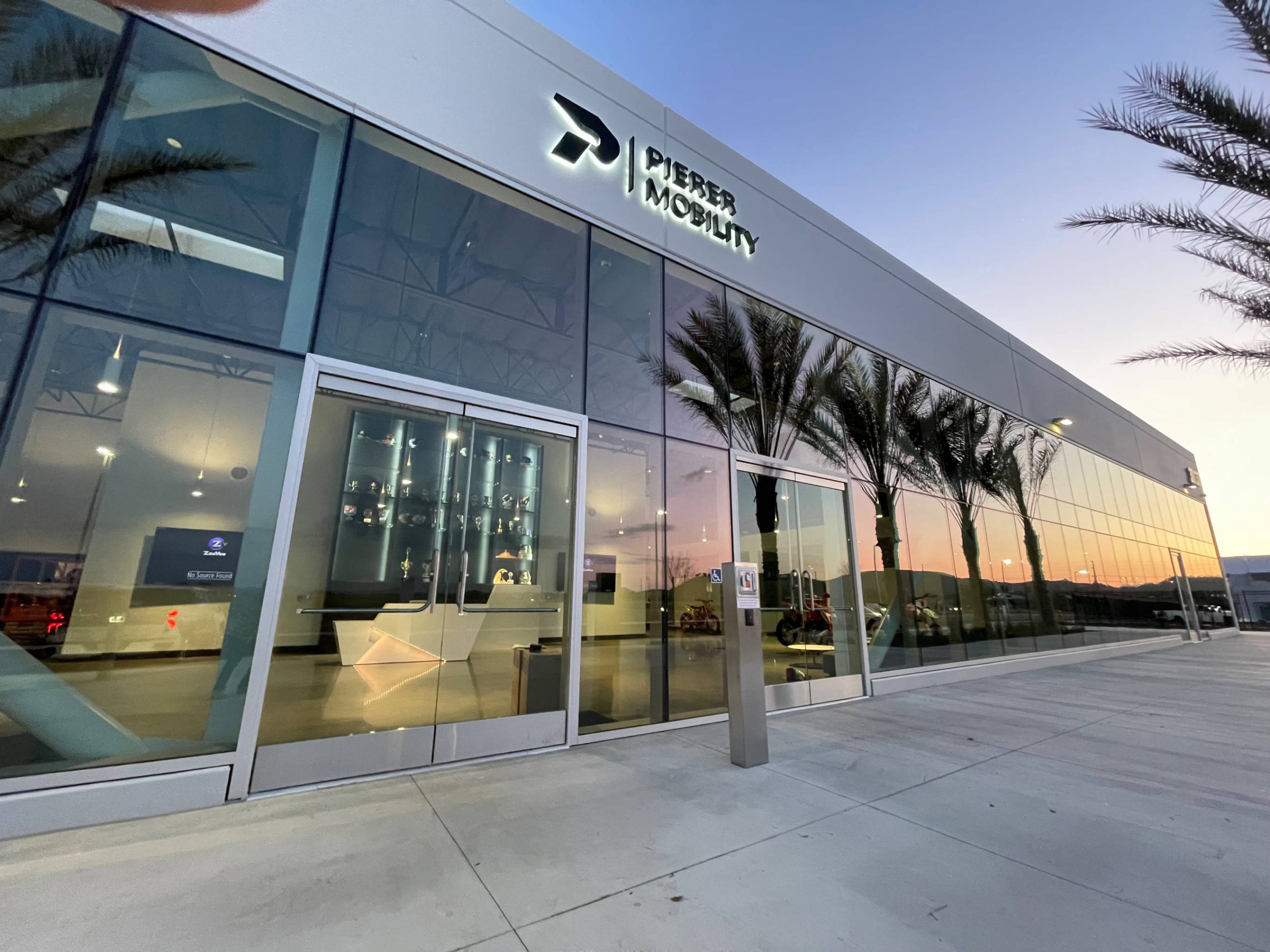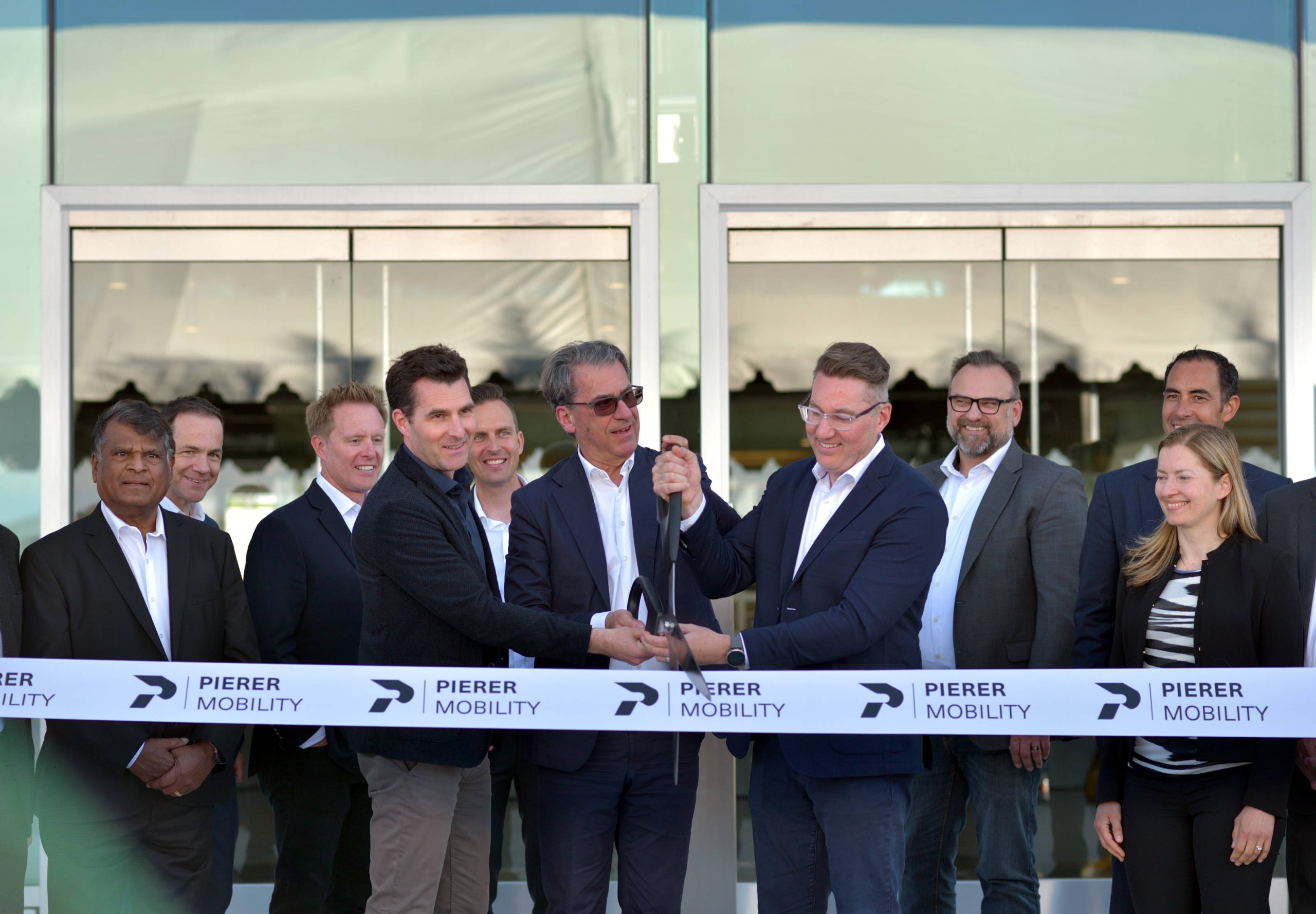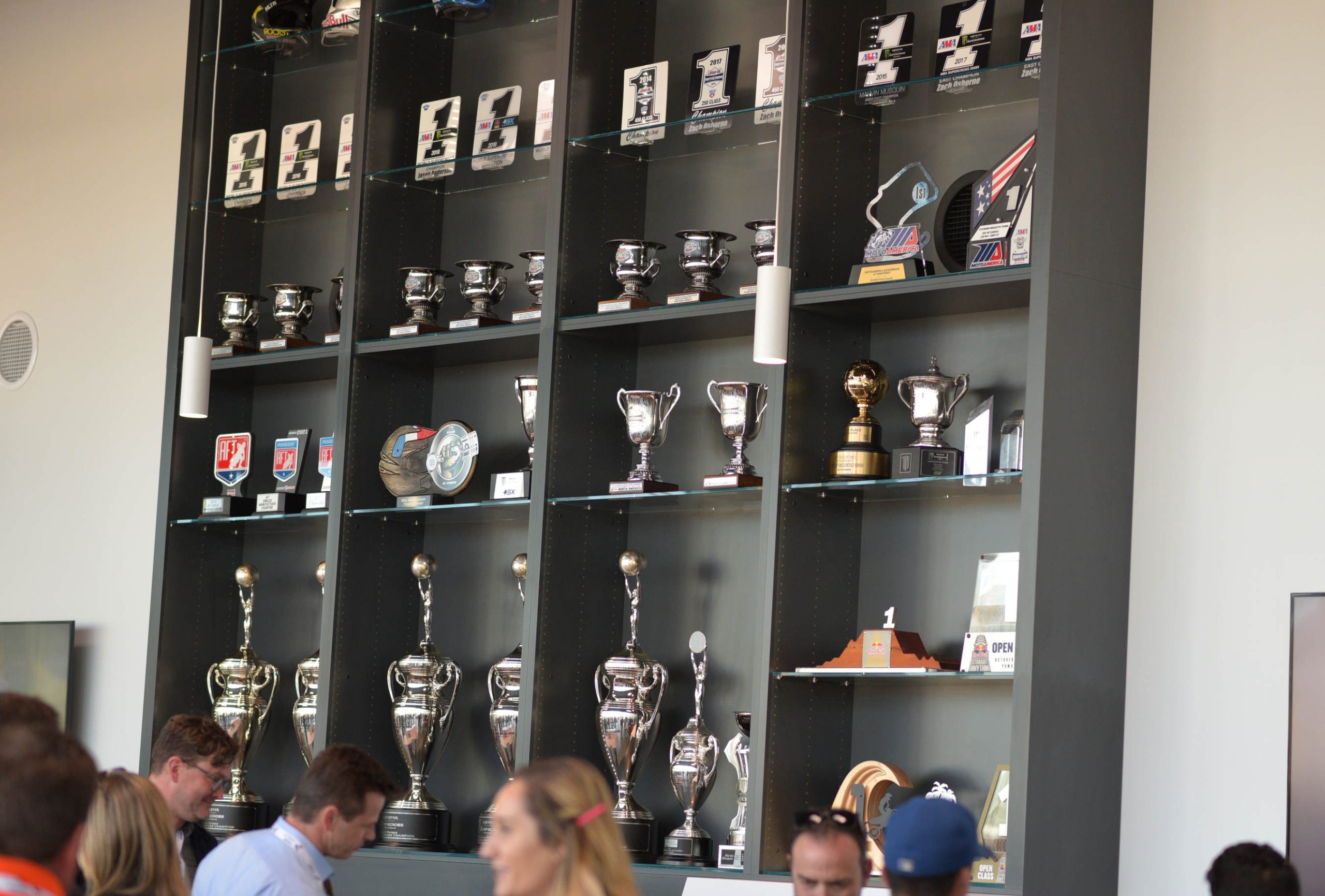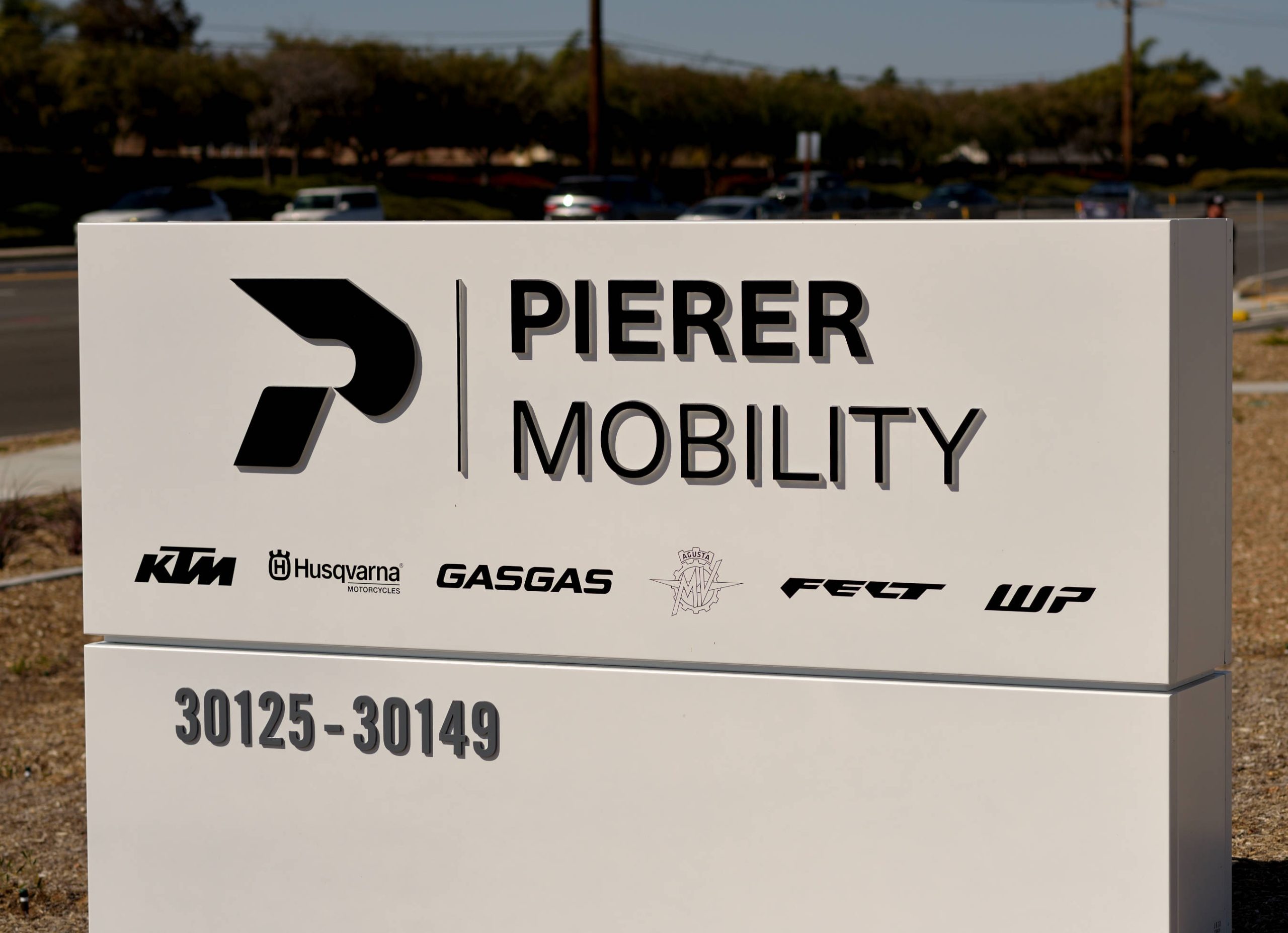Tuesday of this week, MD attended a grand opening ceremony in Murrieta, California for the PIERER Mobility group North American headquarters, housing its several motorcycle brands. The new “campus” is where KTM, GASGAS, Husqvarna and MV Agusta will support their North American operations.
Two main buildings house administrative personnel, and racing support operations. The main building has a massive atrium, and is quite spectacular. Here is the press release from KTM, along with a mix of photos provided by the manufacturer and MD:
- Parent company, PIERER Mobility AG, showcases eight world-class brands under one roof
- With $53 million dollars – biggest single investment in history of PIERER Mobility AG
- Statement in direction of market and customers – North America is one of the most important sales markets
MURRIETA, Calif. – Tuesday afternoon marked a significant milestone for the KTM North America, Inc. and PIERER New Mobility North America organization as it celebrated the official grand opening of PIERER Mobility AG’s brand-new North American Headquarters in Murrieta, California.
Special guests from all over the world were in attendance for Tuesday’s festivities, which included a ribbon cutting ceremony to officially unveil the world-class facilities dedicated to the company’s premium motorcycle brands KTM, Husqvarna Motorcycles, GASGAS and MV Agusta; in addition to bicycle brands Husqvarna E-Bicycles, GASGAS Bicycles and FELT Bicycles and high-end components under the WP brand.
With global headquarters based in Austria, PIERER Mobility AG – parent company of the highly prominent two-wheeled brands – is Europe’s leading manufacturer of powered two-wheelers that has been an active player in the North American market since 1967. PIERER Mobility AG CEO, Stefan Pierer, and select members of the global Board of Directors were in attendance on Tuesday to celebrate the momentous occasion.
“This is an emotional day for me,” said Stefan Pierer, CEO of PIERER Mobility AG. “Exactly 30 years ago I started in the USA with only a dozen of employees. Today we are Europe’s leading Powered Two-Wheeler group, we’re selling approx. 100,000 units annually in the US market, so more than one billion dollars in sales. The most important success factor for us is racing, that is the driving force that pushed us over the years, even in the US market. Building our new North American headquarters in Murrieta was the biggest single investment we’ve ever made yet. We set a new standard for the whole US market.”
The new headquarters is part of KTM North America’s commitment to growing the sport of motorcycling through continuous investment in infrastructure, research and development, technical training, and continuing education for the company’s class-leading products and technology. Specifically, in North America, the organization has grown from 30 employees in 2009 to almost 360 employees in 2023 and this new building allows for further room to expand and grow to support its network of more than 1,000 independently owned small businesses across North America.
CEO of KTM North America, Inc. and PIERER New Mobility North America, Inc., John Hinz, addressed the group on Tuesday afternoon, “Today marks a massive milestone in our company’s history. The campus and our facilities, this represents the single biggest investment by our company, so thank you to Mr. Pierer. We designed these buildings for our employees, race teams, athletes and truly for our dealers across North America to help support our brands and help support sales. This new campus showcases not only the facilities as a tool for our employees and dealers, but it’s our commitment, our dedication and our investment into the motorcycle and bicycle industry here in North America.”
The development, which is situated on 20 acres of land adjacent to the French Valley Airport just off Winchester Road, was initially announced in August 2021 and the project officially broke ground in November of the same year. Following an extraordinary development phase over the past 15 months, the $53 million corporate campus is now operational with three state-of-the-art buildings that include over 130,000 square feet of space dedicated to the company’s technical development, administrative offices, media relations, dealer training, warehouse and world championship racing departments, with 12 additional acres set aside for future development.
The group’s purpose-built private motorsports facility – RD Field – sits one block south of the corporate campus, equipped with two supercross test tracks, hard enduro test track and a trials competition section for product testing and athlete training.













Duckworth and Costin did it. Cosworth DFV
May be Aprilia
Prices keep rising even as production is farmed out to lower costs. Those savings don’t seem to quite make it all the way to the consumer. Shocking I know.
Well said Fastship! I could not agree more. I always thought the Japanese sport bikes were still somewhat affordable, until I did some digging. $26,000CDN for an R1!!
The entire world revolves around credit and what you can afford is literally down to the monthlies you can keep up with. Never mind paying it off, they want you to keep paying as long as you can – even better if you lease!
However it is good to see these guys believe there is enough of a future in motorcycling to invest as heavily as they have. I have to see some positivity in it.
Why do these people continue to locate company facilities (headquarters and many times manufacturing) in states that hate them and the sport? I do not understand this. How about Texas or Florida or any other area where there is not a war against fossil fuels.
Ummm-because the vast majority of the bikes they sell are within a fairly tight radius?
Yup they gonna regret that positioning. Or maybe not. Local Govt may have provided some tax incentives. Maybe middle class Joe can get a 12 buck an hour job there.
There is no middle class for Joe at $12/hr.
Agreed, out of all the state’s California is hands down the worst and by far!!!
Why, because that is where their work force is based. Relocating to another state isn’t always the best move considering many of their employees have there roots in southern California even though they detest the states politics. Also the Amercan motorcycle industry is based in California so it’s easier to recruit new qualified workers from other brands. Truth is I hate California now and I was born there.
Rider population density and available weather related riding time, mean more sales per year.
After fifty years in S Cal, now living in the Northwest, a surprising difference altered my riding experiences.
Every day in Cal, one could do a dawn patrol, and spend the whole day outside. In the NW, the mornings are often crappy weather with no assurance of changing for the better at least 6 months out of the year. Mountain rides also got much colder faster than Cal. Now for a weird one.
At a higher latitude the sun is lower on the horizon than Cal, especially in the winter months, therefore directly in your eyes depending on out bound or going home. More automobiles here, have window tinting than sunny California.
This all means less comfortable riding time, and less interest in buying the latest and greatest per year. Still glad I’m gone from La La land.
Agreed, nobody of worth moves to California anymore.
Not one neck tie amongst them. Corporate clichés which explain much.
After forty plus years of riding I have bought my last new bike from these people. As a young apprentice in the late ‘70’s I couldn’t possibly afford the aspirational superbikes of the time; Honda’s CBX1000, Kawasaki’s Z1300, the XS1100 or GS1000 and the Guzzi LeMans, Ducati 900SS, MV America and the legendary Laverda Jota where exotic to the point of fable. My rattly YR5 was it!
As time passed my earnings grew to the point I could buy the latest and greatest (almost) and did – I had the very first Fireblade in the UK for example which I imported from America!
However, now near the end of my working life I find that I STILL can’t afford the aspirational superbikes that said corporate clichés produce. What gives? Let’s dig into the details.
Towards the end of the ‘70’s the top end bikes were priced around £2,000 here in the UK with one or two outliers £800 more. Adjusted for inflation the very best bike you could buy was ~£10,000 in today’s money. The price for a top Jap bike today is ~£20,000 with the outliers £24,000 – £30,000. Let’s call it double.
The other side of the coin; average UK wages in 1979 was £21,797 (in today’s money) and today it is £29,600 – so just over a third more. Do you see the issue?
Up to the ‘80’s bikes were a means of transport and a plaything of the working man. Blue collar purchases. However, bikes are now increasingly out of financial reach of these same people. Even at my peak earnings I now have to pay double what I couldn’t afford to pay as a teenager.
My theory is that in this more financialised world bikes are priced not according to their intrinsic value but on the amount of credit (debt) the target customer can sustain and this defines the price.
I am enough of an economist to know this is perhaps an even greater phenomenon in America. Only today I read that 60% of new borns of the early ‘60’s would earn more than their parents whereas less than 50% of millenial’s will.
The 30th Anniversary Fireblade is 60% more than my 1992 original. The new bikes are no more or less desirable than they always were, they are simply unaffordable now.
I see no fault in your reasoning, but I wonder if the costs of development of new bikes, including the conformity to emissions regulations, are part of the reason that new prices are proportionately higher? A life-long enthusiast for bikes (but not so much for home-grown British ones), I’ve never bought a new one and never will, so the telephone-number prices are just a source of wonder. Imagine the trauma of finding the expensive machine just does not do it for you!
Yup. Suzuki’s K5 was peak (Jap) sports bike. Aprilia’s RSV4 peak sportsbike, each available second hand for reasonable money.
New bikes are designed in Brussels & Washington. At best I have only mild inteterest in any new models and zero expectation that I will buy one.